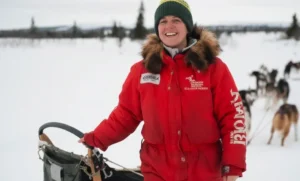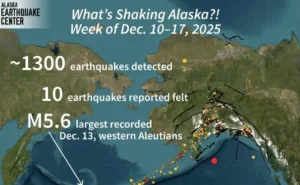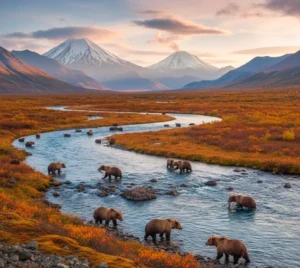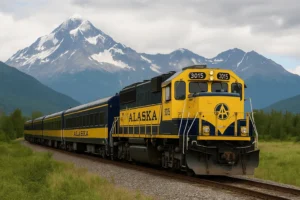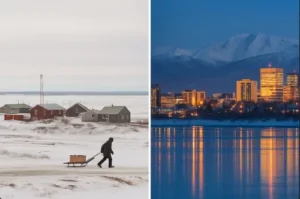The Arctic is home to one of the planet’s most remarkable predators the polar bear. These massive carnivores rely on sea ice for survival and hunting.
If you’ve never had the chance to witness one in the wild, it’s an experience that stays with you. With their sheer size and strength, these incredible creatures are a valid symbol of the frozen north.
Polar Bears Size and Strength
Polar bears are among the largest land carnivores, with males typically weighing between 600 to 1,200 lbs, though some can surpass 1,700 lbs. Females are significantly smaller, usually ranging from 400 to 700 lbs. These powerful predators stand between 8 to 10 feet tall when on their hind legs, making them a formidable presence in the Arctic wilderness.
And while they may look calm and graceful, they are perfectly built for survival in some of the harshest conditions on the planet.
The sea ice is a hunting ground for seals, their primary food source, and a place to rest and travel. However, due to the effect of climate change on Polar Bears, these bears find it harder to survive. If you ever get the chance to visit Alaska, you’ll see firsthand why it’s such a crucial place for them.
Seeing a polar bear in its natural habitat isn’t just a “bucket list” moment—it reminds us how interconnected we are with the natural world and how much we stand to lose if we don’t care for it. And Alaska is at the heart of that story.
Organized polar bear tours in Alaska often operate in areas like Utqiaġvik and Kaktovik, providing safe and informative viewing experiences.
Surprising 10 Interesting Facts About Polar Bears in Alaska
They are one of the most fascinating creatures roaming the Arctic wilderness of Alaska. Let me tell you a fact about them in Alaska, they are classified as a threatened species under the Endangered Species Act due to declining sea ice habitat caused by climate change. The Southern Beaufort Sea population of polar bears has seen a decline of about 40% over a decade, dropping from around 1,500 to 900 bears. In this article, we’ll uncover 10 facts about polar bears in Alaska that you likely never knew.
Fact # 1: Polar Bears Are Not Truly White
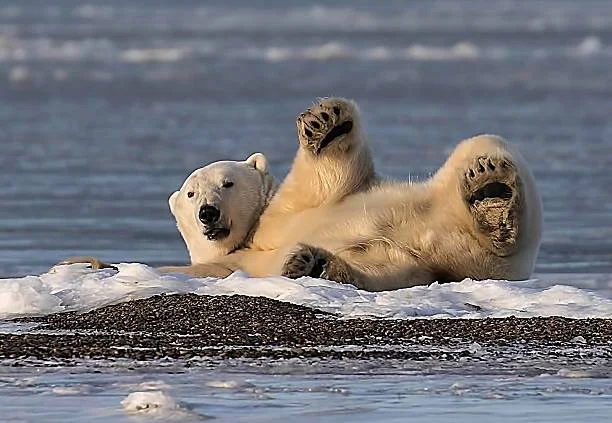
Here’s something that might surprise you about Polar Bears in Alaska:
So, why do they look white? It’s all about light reflection. The sunlight bounces off their fur, scattering and reflecting in a way that makes them appear bright white, blending perfectly with their icy surroundings. Pretty clever, right?
Now, there’s more to their fur than just appearances, it’s crucial for survival. Those hollow hairs act like tiny insulators, trapping warmth close to their bodies. Underside, they have a thick layer of fat to help them stay warm in freezing temperatures.
The relationship between polar bears and native alaskan communities highlights the importance of coexistence in the Arctic. They wouldn’t stand a chance in such extreme conditions without it. It’s incredible how nature equips them for life in one of the harshest climates on Earth.
Fact # 2: Polar Bears Have an Incredible Sense of Smell
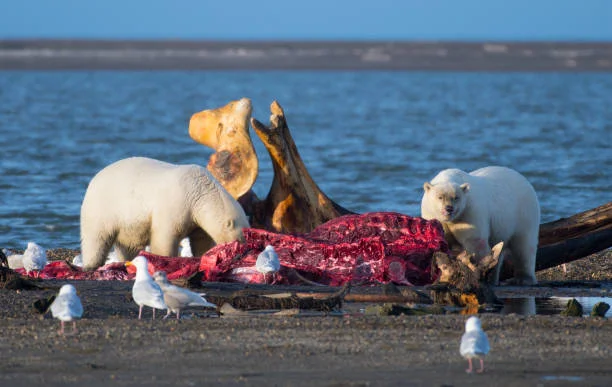
Let’s talk about one of the most mind-blowing abilities, their incredible sense of smell. You might not think about it much, but this skill is a lifesaver in the vast, icy wilderness of Alaska, where food is scarce and hard to find.
This superpower is crucial for their survival. Seals, their primary food source, aren’t easy to catch. They spend much time under the ice, coming up for air through small breathing holes.
It’s just one more way these majestic creatures are perfectly adapted to life in the Arctic. A polar bear’s sense of smell is so strong that it can detect prey from over 20 miles away, an ability essential for survival in the Arctic wilderness.
Fact # 3: Polar Bears Are Skilled Swimmers
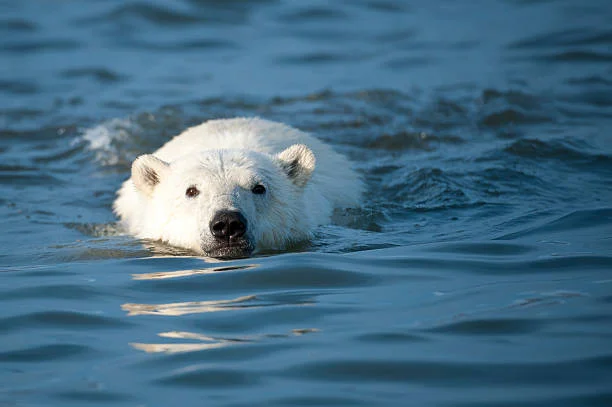
Here’s something you might not expect, Yes the swimming facts—They are excellent swimmers!
Polar bears are capable of swimming over 60 miles in Arctic waters, a crucial adaptation as sea ice continues to shrink due to climate change.
But this isn’t just a cool party trick, it’s become a survival skill. With the ice melting faster than ever, they have to swim longer distances to find solid ground or reach areas where seals might be hunting.
What used to be a short trip across the ice has turned into long, exhausting swims. And while they’re built for it with their strong limbs and the thick layer of fat to keep them warm, it’s a challenge even for these skilled swimmers.
Minimizing human disturbance is key, and understanding how to safely watch polar bears in Alaska ensures both your safety and theirs.
Fact # 4: They Rely on Sea Ice for Survival
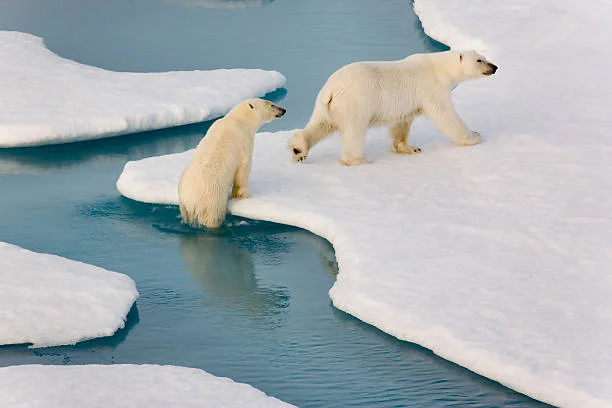
Here’s the thing about them, sea ice isn’t just a part of their scenery but their lifeline. Imagine the ice as their hunting ground, like a giant supermarket where they catch seals, their primary food source.
Here’s where it gets tricky: climate change is causing sea ice to melt. Fast. In places like Alaska, where polar bears once roamed vast, frozen landscapes, they now face shorter hunting seasons and longer swims just to find stable ice. When the ice melts earlier in the year or forms later in the season, they are left stranded, with less time to hunt and more energy spent searching for food.
It’s heartbreaking to think that this iconic Arctic hunter is struggling just to survive in the very environment it’s built for. Climate change isn’t just melting the ice—it’s melting away their way of life.
Fact # 5: Polar Bears Are Solitary Creatures
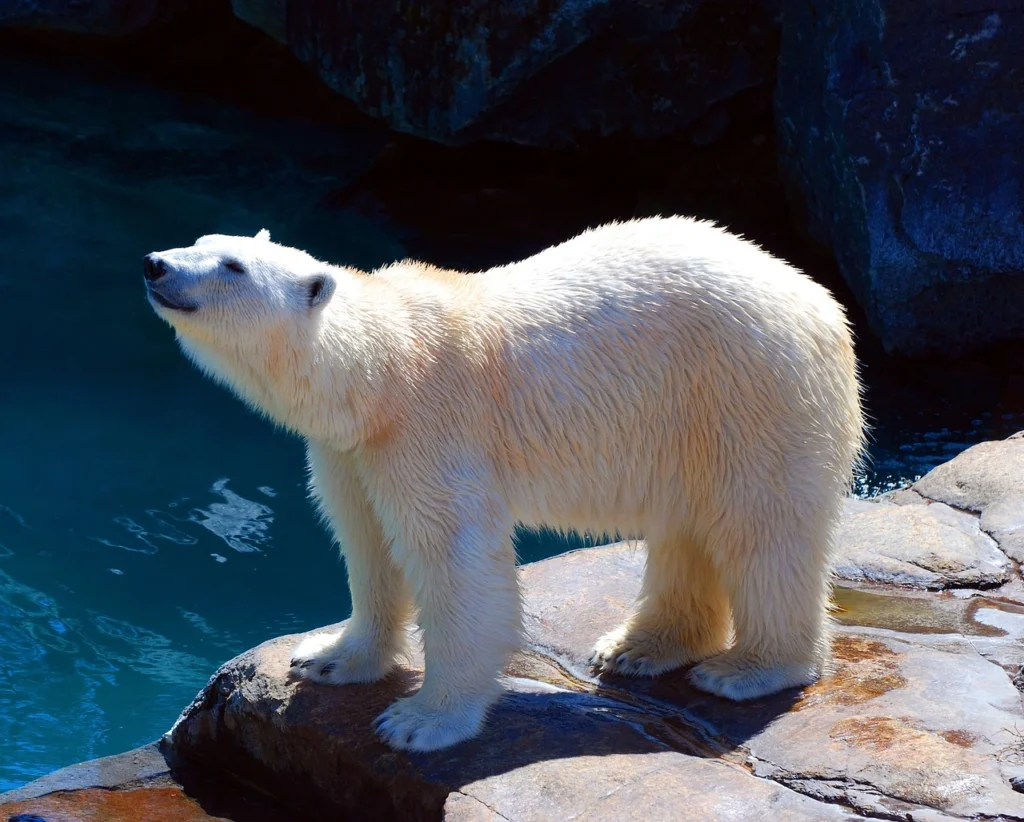
Unlike many animals that roam in packs or herds, they prefer the solo life. These majestic creatures are lone wanderers, spending most of their time exploring the icy wilderness of the Arctic entirely on their own. It’s how they’re wired—they’re fiercely independent, and except for mothers with cubs, you won’t find them hanging out in groups or pairs for long.
They might sniff around, check each other out, and then go their separate ways. It’s like a brief, polite encounter between strangers before each heads off for their next meal.
But once the cubs are ready, they will go off on their own, embracing that solitary lifestyle in their nature.It’s fascinating to think that such powerful creatures live solitary lives in Alaska’s vast, icy expanses, quietly navigating their frozen kingdom on their terms.
Fact # 6: Polar Bears Can Fast for Months
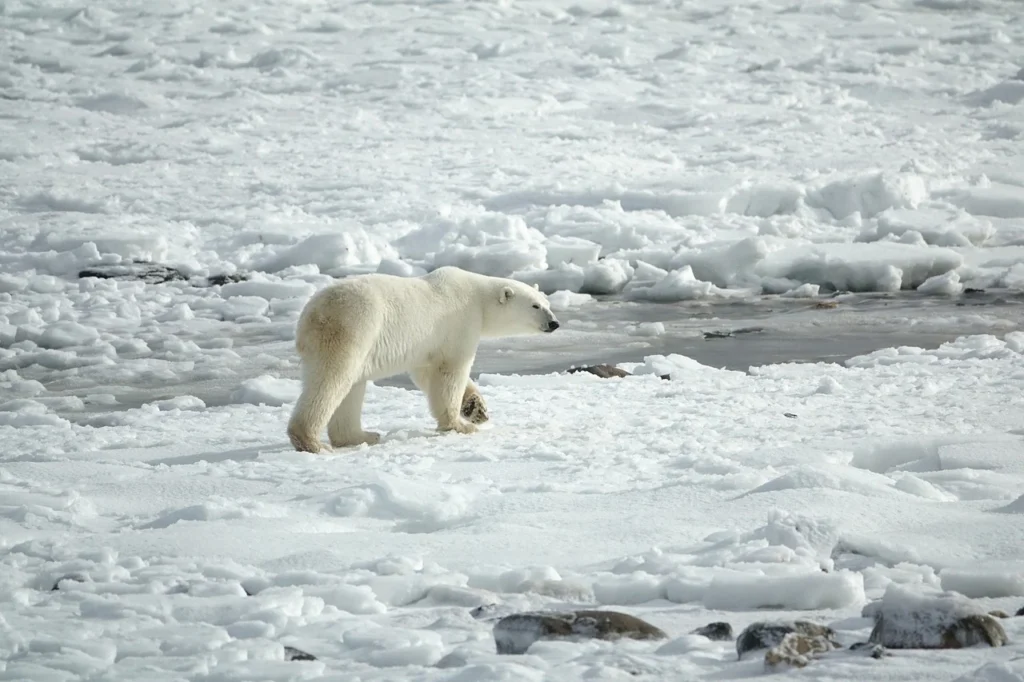
They can go months without eating! We know it sounds impossible, but these fantastic animals are built for survival in some of the harshest conditions on Earth. When food is scarce, usually during the summer, when the sea ice melts, and hunting becomes tough, they rely on one of their most essential survival tools: fat reserves.
During the months when they can’t hunt seals because there’s no sea ice, they live off this stored fat. It sustains them, helping them survive when food is nowhere to be found.
Incredibly, a bear can last for months, sometimes up to three or four, without eating a single bite. They conserve energy by moving less and staying as still as possible.
It’s yet another testament to the their incredible adaptability, but it also reminds us how fragile their survival has become in today’s changing world.
Fact # 7: They Have Unique Hunting Strategies
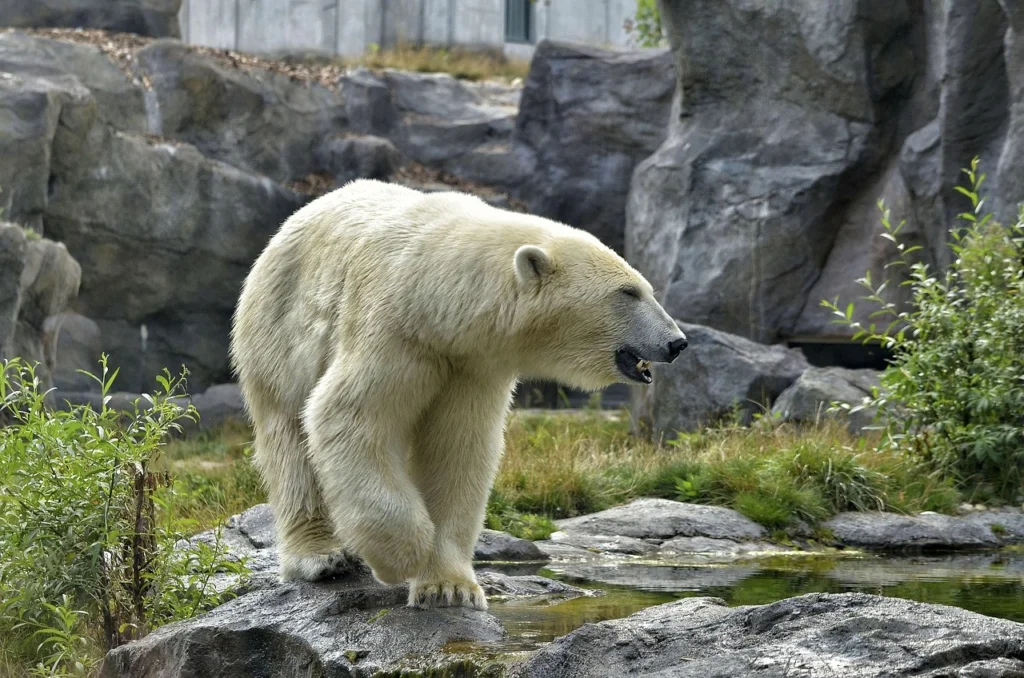
Regarding hunting, polar bears are like the stealthy ninjas of the Arctic. They’ve mastered some clever techniques to catch their favorite prey, seals. One of their main strategies is stalking.
Imagine this: A polar bear quietly creeping across the ice, slowly approaching a seal lounging near a breathing hole. It waits, entirely still, for the perfect moment to strike. And when the seal least expects it, bam! The polar bear pounces, using its power and speed to secure a meal.
But as the environment changes and sea ice melts, they must get creative. Seals are more complex to catch with less ice, and bears spend more time searching for food.
It’s fascinating to see how these apex predators adjust, but it shows just how tough things are getting for them in the wild. Their ability to adapt is impressive, but it’s a race against time as their icy hunting grounds continue to shrink.
Fact # 8: Polar Bear Cubs Stay with Their Mothers for Years
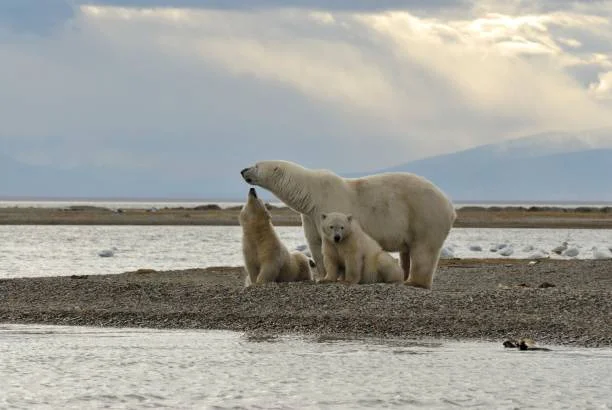 Polar bear motherhood is a story of endurance. Female polar bears give birth during the depths of winter, usually inside snow dens that shield them from the brutal Arctic cold.
Polar bear motherhood is a story of endurance. Female polar bears give birth during the depths of winter, usually inside snow dens that shield them from the brutal Arctic cold.The cubs stay snug in the den with their mother for the first few months, protected from the harsh winter. Once they’re big enough, usually around three or four months old, it’s time to step out into the world.
These early years are critical because cubs wouldn’t stand much of a chance without their mother’s guidance. Once they’re ready, the cubs will venture off to start their own solitary lives, but the lessons learned from their mother stay with them forever.
Fact # 9: Polar Bears Are Excellent Climbers
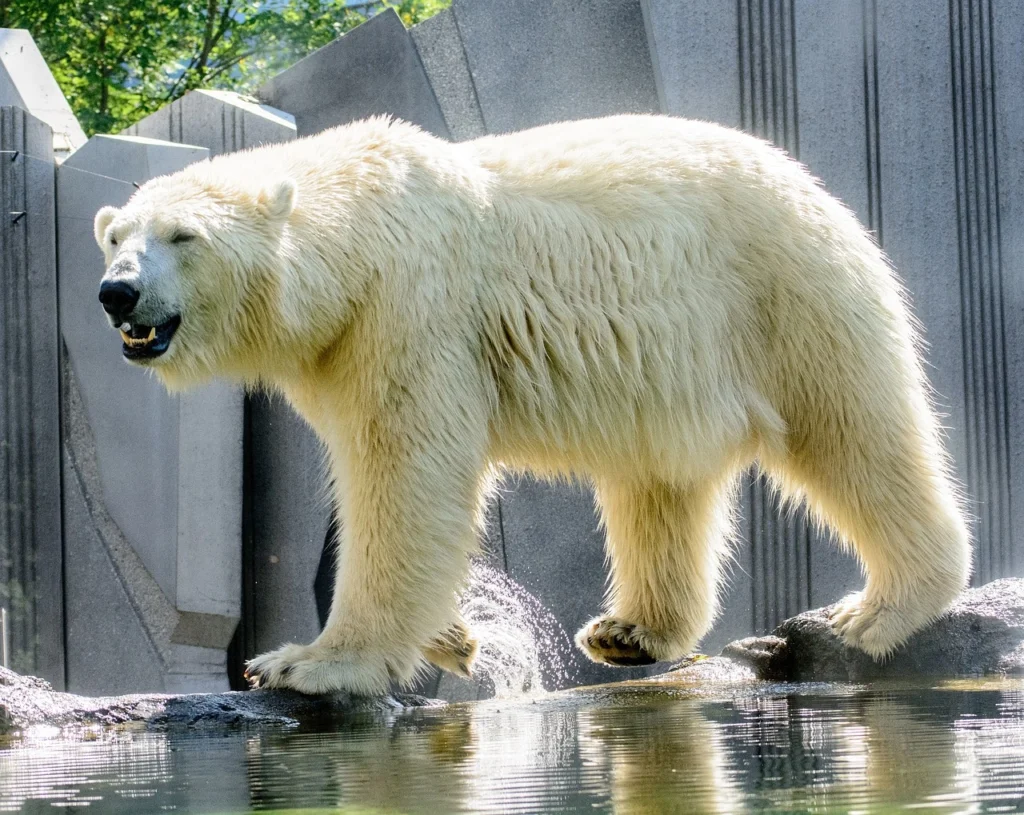
Most people picture polar bears as powerhouse swimmers—and they are—but did you know they’re also surprisingly good climbers?
Whether scaling icy slopes to get a better vantage point or navigating rugged coastal areas searching for food, they are more agile than you might expect for such large animals. Their solid limbs and sharp claws give them the grip to pull themselves up icy ridges or snowy inclines easily.
Fact # 10: Polar Bears Are the Largest Land Carnivores
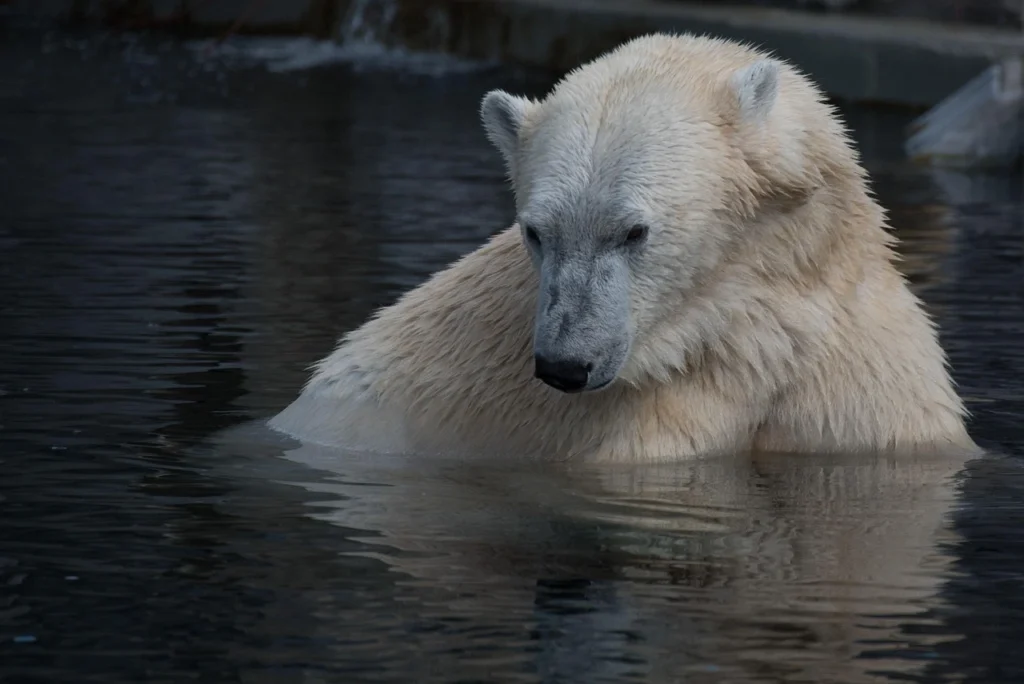
It’s like meeting a real-life giant! To put it into perspective, they’re even more significant than lions, tigers, or grizzly bears. These animals are not only massive but also built for power and endurance. Understanding polar bears’ role in the Arctic ecosystem is vital.
Their paws, which can be almost a foot wide, act like snowshoes, allowing them to walk across the ice without sinking. And those sharp claws and strong jaws? They’re perfect for gripping slippery seals and tearing through thick blubber. If you’re planning a trip to see these majestic creatures, it’s crucial to know the best time for polar bear spotting to make the most of your experience.
FAQs
Yes, Alaska is home to polar bears, especially near the sea ice in the Arctic regions.
They are found along Alaska’s northern coast, particularly from the Bering Sea to the Beaufort Sea.
Polar bears live along Alaska’s Arctic coast and on sea ice, where they hunt seals.
No, polar bears do not naturally live in Fairbanks, as it is too far inland and south of their habitat.
Polar bear hunting is regulated and only allowed for Alaska native subsistence hunters.
It’s estimated that around 4,000-7,000 polar bears are part of the Alaska-Chukchi and Alaska-Beaufort populations.

